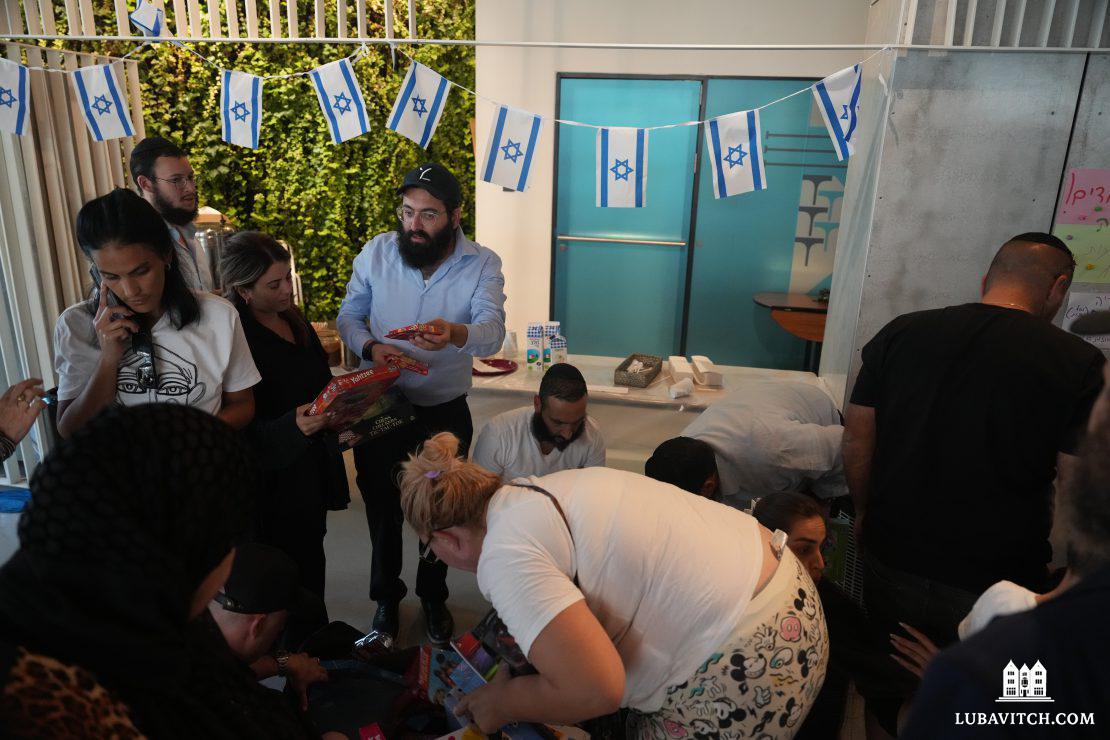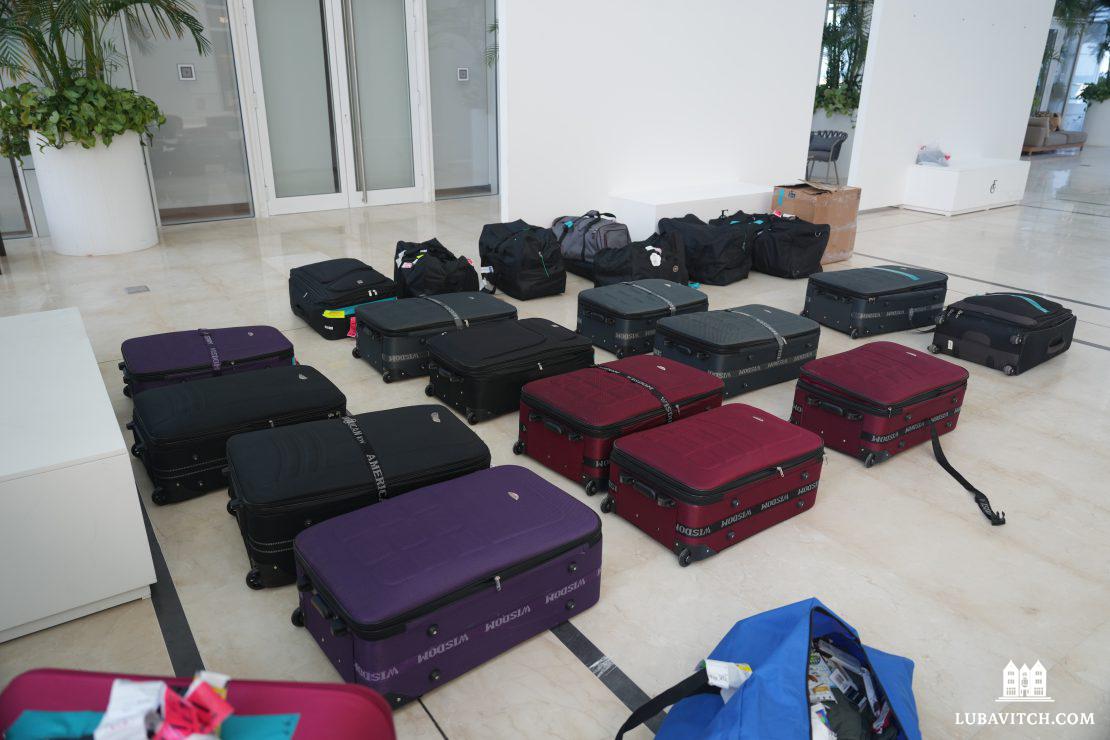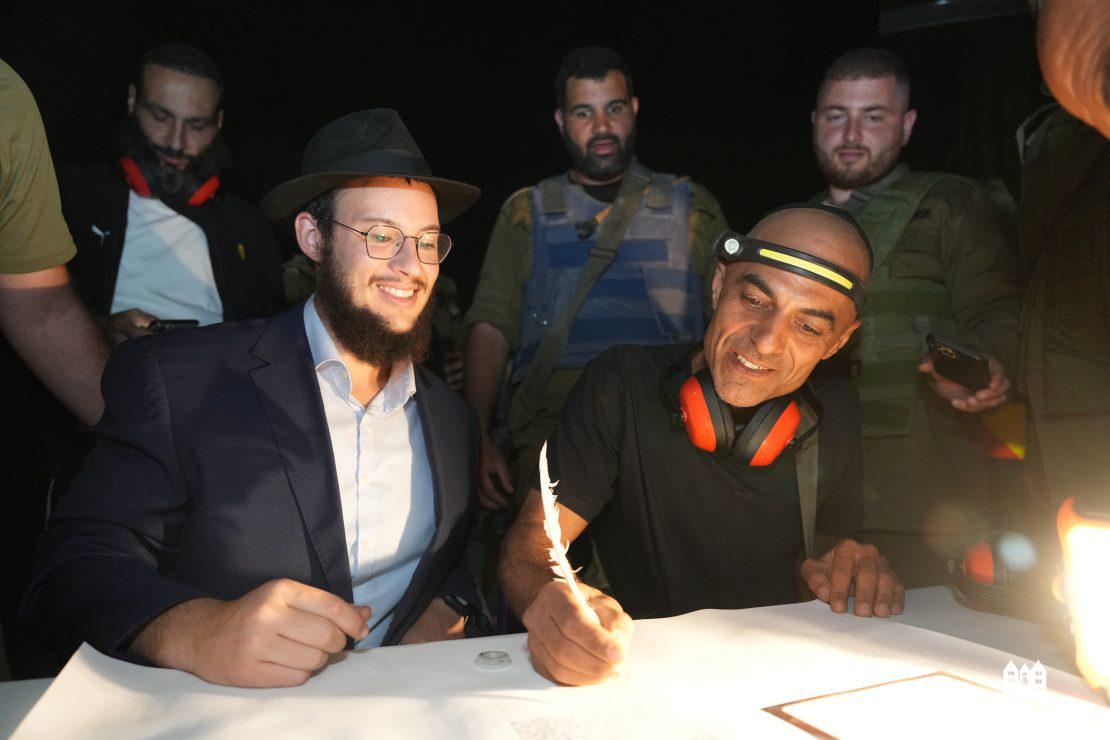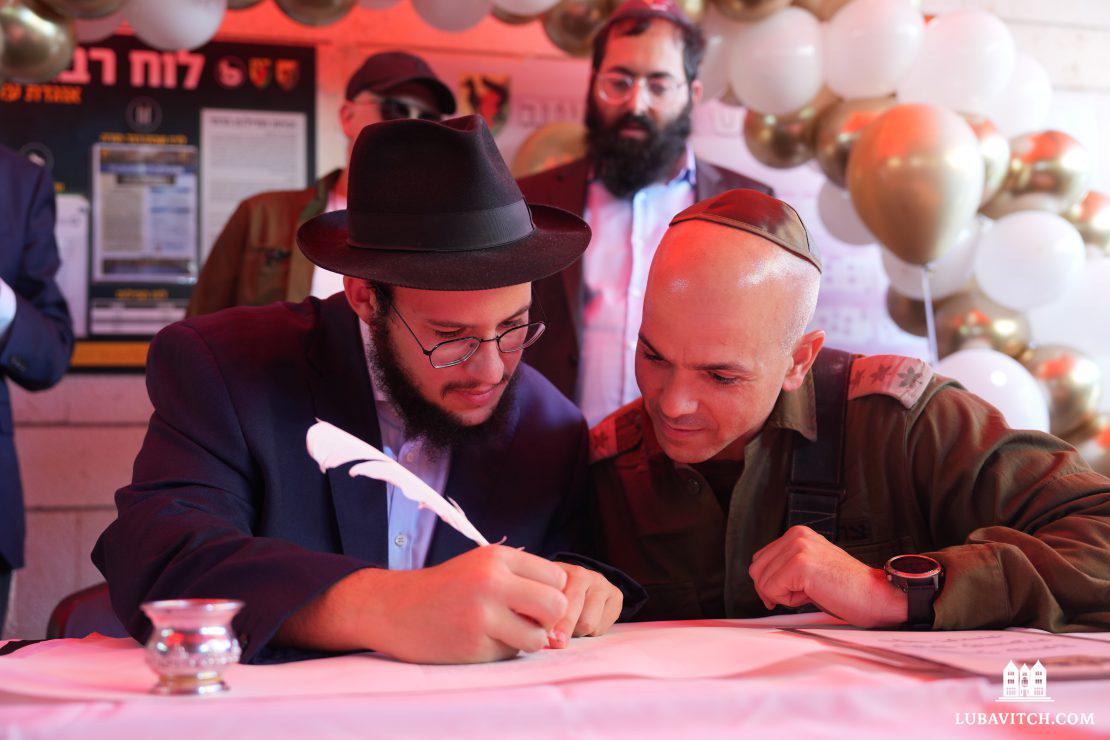When Rabbi Shuey Biston of Chabad of Parkland, Florida, visited the Re’im Base on the Gaza border, he was deeply taken by what he saw.
Re’im Base was the only border outpost that withstood Hamas’s murderous attacks on October 7, and now Biston was visiting as part of a delegation of Chabad-Lubavitch rabbis who visited Israel in the weeks following the attack to show solidarity, bring comfort and encouragement, and hear firsthand the tales of the survivors.
One such story took place in Re’im, where Avigdor Dickstein, a Lubavitcher chossid who serves in the IDF, retired to bed following joyous Hakafot, dancing with the Torah on Shemini Atzeret evening. But a scant few hours later, he awoke to a nightmare. As sirens sounded, Dickstein rushed to his assigned position in the base’s War Room, from where the response to any attack would be coordinated. Soon, the distant booms of impacting rockets were replaced with the far more ominous sounds of automatic weapons fire as swarms of terrorists attempted to overrun the base.

Dickstein related how, outnumbered, the soldiers of Re’im fought back bravely, standing their ground at great personal cost. More than thirty IDF soldiers died fighting on that dark day. As the attack intensified, Dickstein ordered the surviving soldiers to take shelter in the base’s gym, while he called in an air strike—dangerously close to their location—that succeeded in wiping out the force attacking them. It took the IDF twelve hours to completely regain control of the base.
When Biston visited a week and a half later, Dickstein was still on post, directing units in the area. When Biston asked this war-weary hero what they could do for him, the conversation came back to those Torahs they had danced with, hours before the world went mad. The base’s Ashkenazi Sefer Torah was in bad shape, Dickstein explained.
On the spot, Biston made a commitment that he would find a way to replace the Torah, to bring the light of G-d’s teachings once more to a place that had seen such loss—and such heroism.

In the months preceding the First Lebanon War in 1981 and again after war broke out in 1982, the Rebbe campaigned for a Torah scroll to be written and that every IDF soldier should have a letter in the Torah. The Rebbe spoke about the protection this mitzvah would bring.
“Concerning those tasked with protecting the Jewish People and the Land of Israel to the extent that they even risk their bodies and their lives, a concerted effort to unite them is surely fitting,” the Rebbe said. “So that they become ‘like one man with one heart’ through one Torah scroll in which each soldier will have a letter.”
The Rebbe went on to say that by uniting through the Torah scroll, each soldier will carry the strength of 304,805 soldiers—the number of letters in the Torah—and that certainly, the enemies of the Jewish people will wish to avoid war.
Now, as war again raged in Israel, Biston recalled the Rebbe’s words.
With the support of Chabad of Parkland and the Rok Family Shul—led by Rabbi Chaim and Deenie Lipskar—the IDF Unity Torah was launched.
Biston would return to Israel on a second visit, and this time he would bring along a parchment scroll upon which a sofer—scribe—outlined the first few hundred letters of a new Torah scroll. They would give the brave defenders of the Holy Land the opportunity to write a letter, to join in the protection of the Torah scroll.

They initially planned to begin the writing of the Torah in Kibbutz Be’eri, the site of one of the worst massacres on October 7. But as they drove toward Be’eri, they passed a tank column. Engines revved and soldiers scrambled to load up, and it was clear that this column was about to roll into Gaza to engage the enemy.
“As we watched the soldiers prepare to enter Gaza, we realized that we needed to start writing this Torah right here, right now,” Biston told Lubavitch.com. “The soldiers began lining up, eager to join in the unity Torah.”
As the writing commenced, one officer asked Biston whether he could write a letter for a soldier who wasn’t there.
“He told me that this soldier was under his command during fighting in Gaza the night before. Tragically, he had lost his life,” Biston said. “Now, with a choking voice, he asked if he could write a letter in this soldier’s memory.”
The officer wrote, and Biston looked on, sobbing for the sacrifice these soldiers had already seen.

Then it was on to Be’eri, where another tragic site met them. As they set up the table with the Torah scroll, the head of the local chapter of Zaka—the Israeli organization focused on ensuring that Jewish remains are brought to burial in accordance with Jewish law—walked over and told us his story.
He had just identified the mutilated remains of a child, and despite years spent tending to the deceased, what he had seen now put him in a crisis of faith. “What am I doing here,” he wondered. “But then I saw you,” he said. “And I realized that I’m here because I’m doing a mitzvah—the mitzvah of bringing the dead to burial—and ‘One mitzvah leads to another mitzvah.’ Now I have the opportunity to fulfill the mitzvah of writing a letter in the Torah.”
As the war continues, the Torah is making its way around the land of Israel, uniting its defenders in Divine protection.
For more information about this campaign, visit idfunitytorah.com.

Be the first to write a comment.